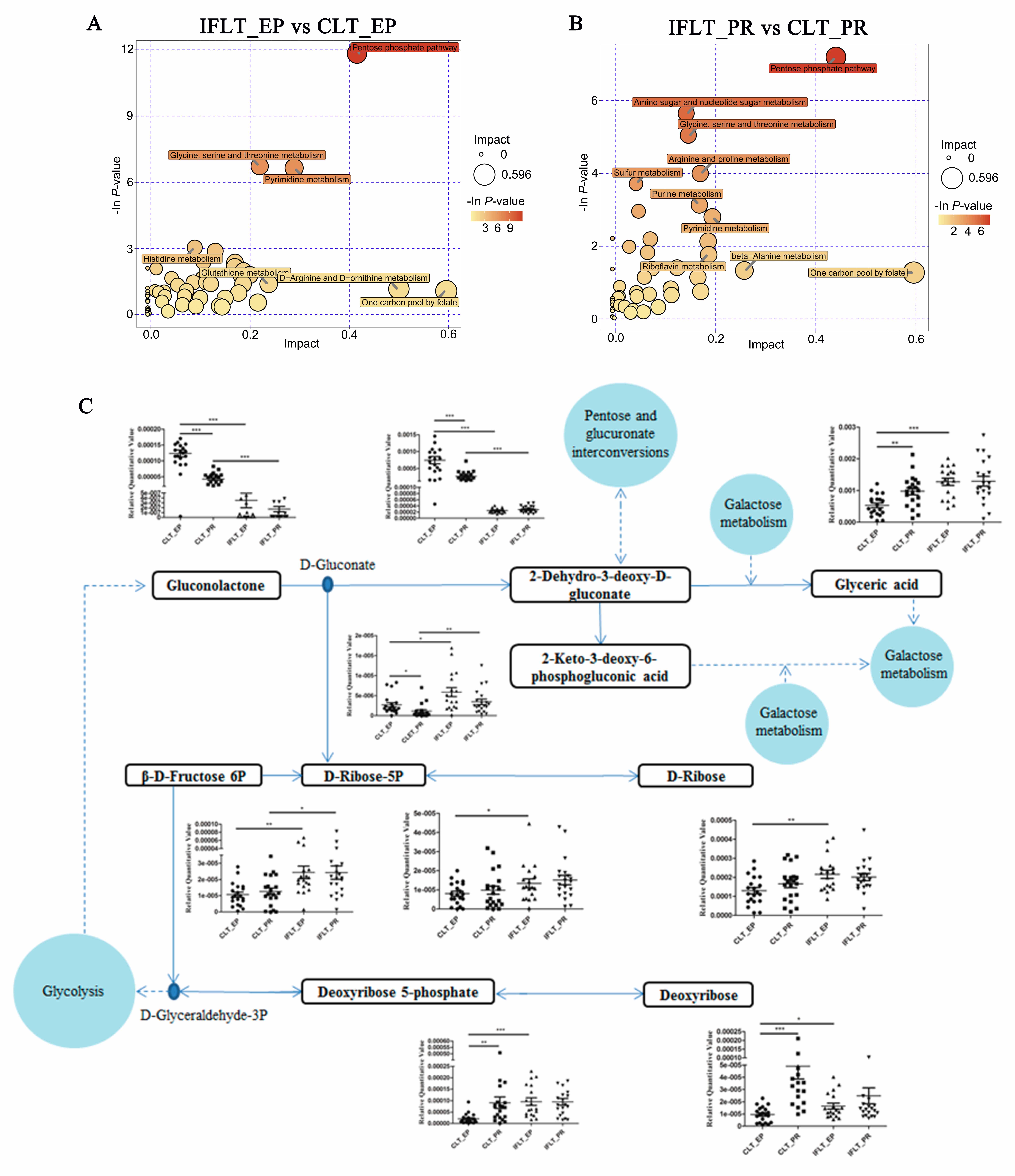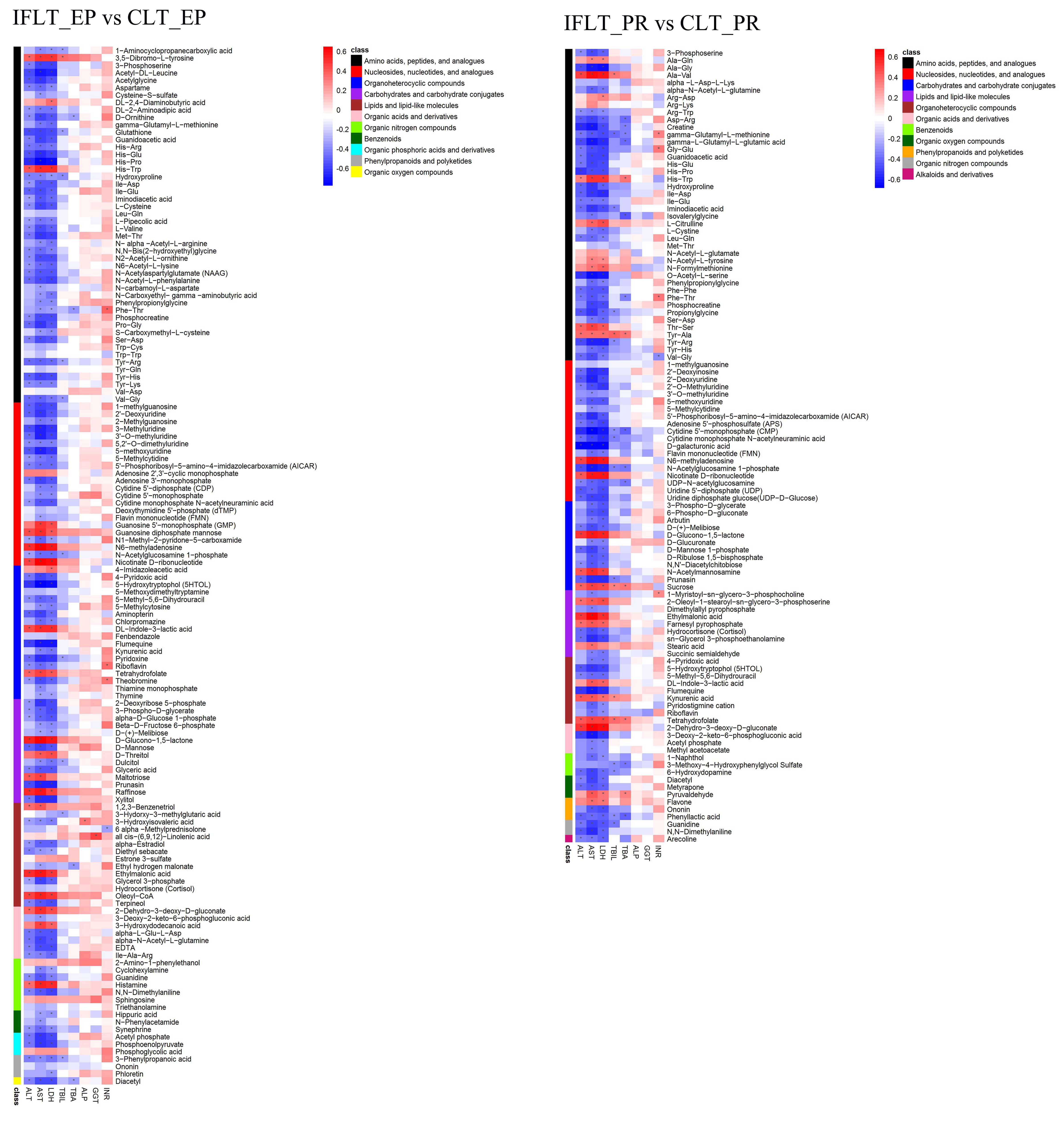Metabolism Reprogramming During Conventional versus Ischemia-Free Liver Transplantation
1Organ Transplant Center, The First Affiliated Hospital of Sun Yat-sen University, Guangzhou, China, 2Sun Yat-sen University, Guangzhou, China
Meeting: 2020 American Transplant Congress
Abstract number: B-343
Keywords: Graft function, Ischemia, Liver transplantation, Preservation
Session Information
Session Name: Poster Session B: Ischemia Reperfusion & Organ Rehabilitation
Session Type: Poster Session
Date: Saturday, May 30, 2020
Session Time: 3:15pm-4:00pm
 Presentation Time: 3:30pm-4:00pm
Presentation Time: 3:30pm-4:00pm
Location: Virtual
*Purpose: Our group has developed a novel transplant procedure called ischemia-free liver transplantation (IFLT), during which the liver can be procured, preserved and implanted without ischemia. In this study, metabolomics was used to explore the metabolic changes of liver allografts during conventional liver transplantation (CLT) and IFLT.
*Methods: Briefly, the IFLT procedure included the donor liver was harvested after an in situ NMP circuit was established, then moved into an organ reservoir for ex situ NMP, and finally implanted under in situ NMP. Liver biopsy samples were analyzed by untargeted LC-MS metabolomics method.
*Results: Volcano plot showed that there were a larger numbers of differentially expressed metabolites after graft re-vascularization in the CLT group than those in the IFLT group (up-regulated: 79 versus 42; down-regulated: 67 versus 41) (Fig. 1). Distinct metabolome profiles, particularly the pentose phosphate pathway (PPP), were identified between the two groups and between samples collected at the end of preservation and after graft re-vascularization. Nine of the differentially expressed metabolites obtained by comparison of IFLT_EP and CLT_EP belong to this pathway (Fig. 2). Besides, the levels of several differentially expressed metabolites, such as Guanosine 5’−monophosphate (GMP), D−Glucono−1,5−lactone, N6−methyladenosine were found to be associated with post-transplant graft function (Fig. 3).
*Conclusions: Compared with CLT grafts, the metabolic profiling of IFLT grafts is quite different. Obvious metabolic reprogramming, particularly changes of PPP occurred during CLT. The results of this study provide insights in understanding the mechanism of ischemia-reperfusion injury during liver transplantation.
To cite this abstract in AMA style:
Guo Z, Zhang Z, Gao N, Zhang H, He X. Metabolism Reprogramming During Conventional versus Ischemia-Free Liver Transplantation [abstract]. Am J Transplant. 2020; 20 (suppl 3). https://atcmeetingabstracts.com/abstract/metabolism-reprogramming-during-conventional-versus-ischemia-free-liver-transplantation/. Accessed December 22, 2025.« Back to 2020 American Transplant Congress



